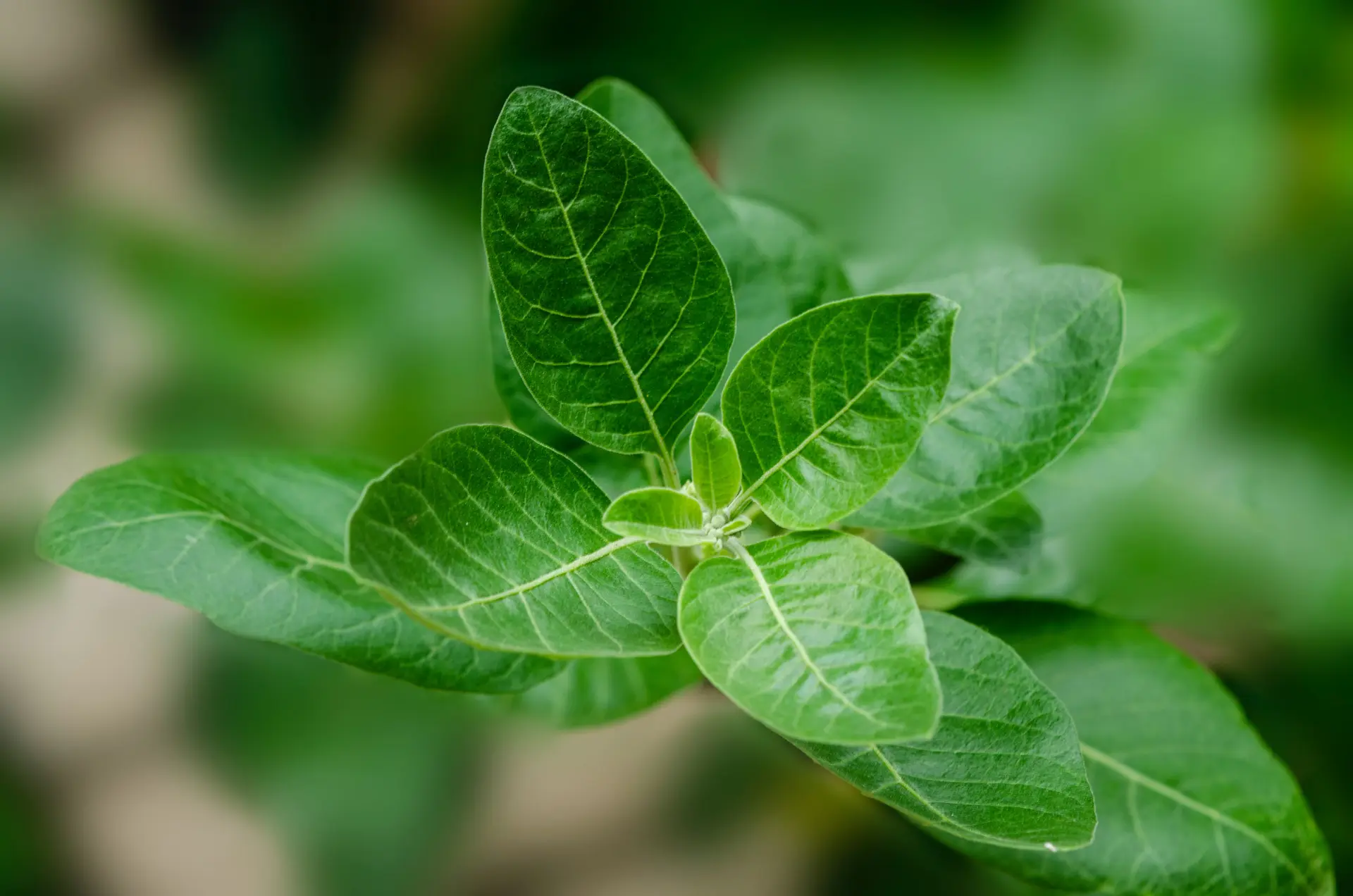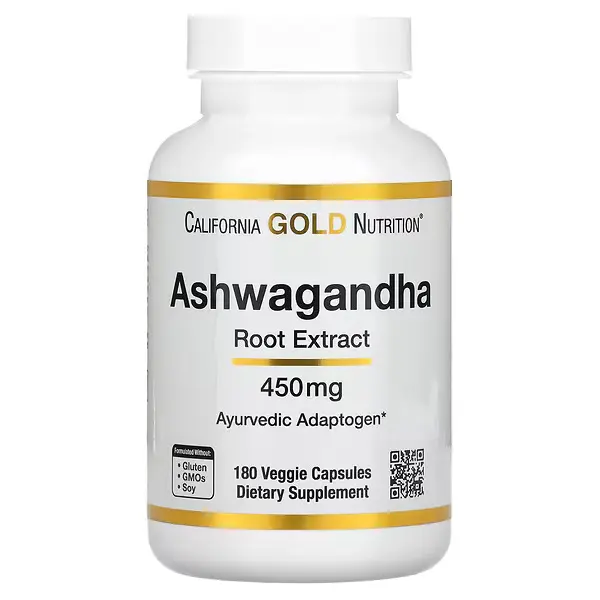Ashwagandha
What is Ashwagandha?
Ashwagandha, known scientifically as withania somnifera, is a plant in the nightshade family that grows in various parts of the world.[1] It has been used traditionally in India as a medicine. The somnifera part of the latin name for the plant means "sleep-inducing" and the name ashwagandha is a combination of the Sanskrit words ashva and gandha, horse and smell. Both reflect on the properties of the herb, which supposedly has calming properties and smells like a horse.[2]
Where does Ashwagandha come from?
Withania somnifera grows from parts of eastern Africa through the Middle East to India. In India it has been cultivated for a long time for its roots. The roots are ground into powder and used in tonics in ayurvedic medicine. It has traditionally been used as an adaptogen, diuretic and sedative. In the western world it has become popular as a supplement which can readily be bought online.
What are the effects of Ashwagandha?
Ashwagandha has a lot of different alleged benefits including anti-anxiety; better physical performance and increased fertility. Some of which have a stronger scientific basis for them than others. This is probably because it has been for centuries—and it still being—used in ayurvedic medicine to counter a wide variety of ailments. Ashwagandha works through a combination of different molecules called withanolids. More than 40 different of these molecules have already been isolated from this plant.[2][3] It is hard to identify which of these individual molecules might be responsible for what effect. What can be said is that the supposed benefits come from the whole breadth of different molecules in the root of the withania somnifera plant.
Cognitive
- Reduced anxiety
- Reduced cortisol levels
- Reduced depression
- Reduced fatigue
- Reduced OCD symptoms[5]
How to use Ashwagandha?
Ashwagandha can be supplemented through either pills or powders. Ashwagandha pills are easy to use and widely available but might offer less possibilities in the way of really fine-tuning your preferred dosage. Ashwagandha powders are equally widely available and because of its low risk of an accidental overdose might be the preferred supplement since it allows for more fine tuning of the dosage. Powders are frequently added to shakes or smoothies.
How much Ashwagandha to use?
When trying out new supplements it is wise to start with a lower dose and–depending on the experienced effects–increase or decrease the dosage accordingly
The studies on the benefits of this root have used varying amounts. A study on reducing arthritis used 450 mg root powder administered 4 times per day.[6] In a sleep study 2 g was administered twice a day for up to 3 months. Most available pills tend to contain between 100 and 500 mg of ashwagandha.
What are the side effects of Ashwagandha?
Ashwagandha generally appears to be safe but prolonged or high dose use may have unwanted effects. Animal studies feeding high amounts of ashwagandha to rats or mice for prolonged periods of time found unfavorable effects but no direct lethality.[2] Pregnant women should avoid using Ashwagandha because of its risk to cause abortion[17]
Interactions of Ashwagandha
Most nootropics are relatively safe to use on their own. Combining them with other substances may cause them to suddenly become dangerous or life-threatening.
There are no known significant interactions of ashwagandha.
Related articles
References
- [1] Withania somnifera (L.) Dunal GRIN-Global. (1985, July 11). United States Department of Agriculture. Retrieved December 30, 2021
- [2] Ganzera, M., Choudhary, M., & Khan, I. (2003). Quantitative HPLC analysis of withanolides in Withania somnifera. Fitoterapia, 74(1–2), 68–76.
- [3] Zhao, J., Nakamura, N., Hattori, M., Kuboyama, T., Tohda, C., & Komatsu, K. (2002). Withanolide Derivatives from the Roots of Withania somnifera and Their Neurite Outgrowth Activities. Chemical and Pharmaceutical Bulletin, 50(6), 760–765. https://doi.org/10.1248/cpb.50.760
- [4] Sumantran, V. N., Chandwaskar, R., Joshi, A. K., Boddul, S., Patwardhan, B., Chopra, A., & Wagh, U. V. (2008). The relationship between chondroprotective and antiinflammatory effects ofWithania somniferaroot and glucosamine sulphate on human osteoarthritic cartilagein vitro. Phytotherapy Research, 22(10), 1342–1348. https://doi.org/10.1002/ptr.2498
- [5] Jahanbakhsh, S. P., Manteghi, A. A., Emami, S. A., Mahyari, S., Gholampour, B., Mohammadpour, A. H., & Sahebkar, A. (2016). Evaluation of the efficacy of Withania somnifera (Ashwagandha) root extract in patients with obsessive-compulsive disorder: A randomized double-blind placebo-controlled trial. Complementary Therapies in Medicine, 27, 25–29. https://doi.org/10.1016/j.ctim.2016.03.018
- [6] Kulkarni, R., Patki, P., Jog, V., Gandage, S., & Patwardhan, B. (1991). Treatment of osteoarthritis with a herbomineral formulation: a double-blind, placebo-controlled, cross-over study. Journal of Ethnopharmacology, 33(1–2), 91–95. https://doi.org/10.1016/0378-8741(91)90167-c
- [7] Senthil, V., Ramadevi, S., Venkatakrishnan, V., Giridharan, P., Lakshmi, B., Vishwakarma, R., & Balakrishnan, A. (2007). Withanolide induces apoptosis in HL-60 leukemia cells via mitochondria mediated cytochrome c release and caspase activation. Chemico-Biological Interactions, 167(1), 19–30. https://doi.org/10.1016/j.cbi.2007.01.004
- [8] Kaur, K., Rani, G., Widodo, N., Nagpal, A., Taira, K., Kaul, S., & Wadhwa, R. (2004). Evaluation of the anti-proliferative and anti-oxidative activities of leaf extract from in vivo and in vitro raised Ashwagandha. Food and Chemical Toxicology, 42(12), 2015–2020. https://doi.org/10.1016/j.fct.2004.07.015
- [9] Niture, S., Rao, U., & Srivenugopal, K. (2006). Chemopreventative strategies targeting the MGMT repair protein: augmented expression in human lymphocytes and tumor cells by ethanolic and aqueous extracts of several Indian medicinal plants. International Journal of Oncology. https://doi.org/10.3892/ijo.29.5.1269
- [10] Mathur, R., Gupta, S. K., Singh, N., Mathur, S., Kochupillai, V., & Velpandian, T. (2006). Evaluation of the effect of Withania somnifera root extracts on cell cycle and angiogenesis. Journal of Ethnopharmacology, 105(3), 336–341. https://doi.org/10.1016/j.jep.2005.11.020
- [11] Ichikawa, H., Takada, Y., Shishodia, S., Jayaprakasam, B., Nair, M. G., & Aggarwal, B. B. (2006). Withanolides potentiate apoptosis, inhibit invasion, and abolish osteoclastogenesis through suppression of nuclear factor-κB (NF-κB) activation and NF-κB–regulated gene expression. Molecular Cancer Therapeutics, 5(6), 1434–1445. https://doi.org/10.1158/1535-7163.mct-06-0096
- [12] Stan, S. D., Hahm, E. R., Warin, R., & Singh, S. V. (2008). Withaferin A Causes FOXO3a- and Bim-Dependent Apoptosis and Inhibits Growth of Human Breast Cancer Cells In vivo. Cancer Research, 68(18), 7661–7669. https://doi.org/10.1158/0008-5472.can-08-1510
- [13] Stan, S. D., Zeng, Y., & Singh, S. V. (2008). Ayurvedic Medicine Constituent Withaferin A Causes G2 and M Phase Cell Cycle Arrest in Human Breast Cancer Cells. Nutrition and Cancer, 60(sup1), 51–60. https://doi.org/10.1080/01635580802381477
- [14] Mulabagal, V., Subbaraju, G. V., Rao, C. V., Sivaramakrishna, C., DeWitt, D. L., Holmes, D., Sung, B., Aggarwal, B. B., Tsay, H. S., & Nair, M. G. (2009). Withanolide sulfoxide from Aswagandha roots inhibits nuclear transcription factor-kappa-B, cyclooxygenase and tumor cell proliferation. Phytotherapy Research, 23(7), 987–992. https://doi.org/10.1002/ptr.2736
- [15] Malik, F., Kumar, A., Bhushan, S., Khan, S., Bhatia, A., Suri, K. A., Qazi, G. N., & Singh, J. (2007). Reactive oxygen species generation and mitochondrial dysfunction in the apoptotic cell death of human myeloid leukemia HL-60 cells by a dietary compound withaferin A with concomitant protection by N-acetyl cysteine. Apoptosis, 12(11), 2115–2133. https://doi.org/10.1007/s10495-007-0129-x
- [16] Oh, J. H., Lee, T. J., Kim, S. H., Choi, Y. H., Lee, S. H., Lee, J. M., Kim, Y. H., Park, J. W., & Kwon, T. K. (2008). Induction of apoptosis by withaferin A in human leukemia U937 cells through down-regulation of Akt phosphorylation. Apoptosis, 13(12), 1494–1504.
- [17] Mohan, R., Hammers, H., Bargagna-mohan, P., Zhan, X., Herbstritt, C., Ruiz, A., Zhang, L., Hanson, A., Conner, B., Rougas, J., & Pribluda, V. (2004). Withaferin A is a potent inhibitor of angiogenesis. Angiogenesis, 7(2), 115–122.
- [18] Herbal medicinal products during pregnancy: are they safe? (2002). BJOG: An International Journal of Obstetrics and Gynaecology, 109(12), 1425–1426.
| Name | Ashwagandha |
| Other names | Withania somnifera |
| Effects | Anxiety Reducing, Sleep |
| Dosage | 300 ~ 600 mg Low to medium dosage 300 600 1200 |

